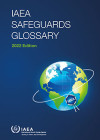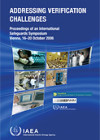Based on a particular safeguards approach, the IAEA prepares an annual implementation plan that specifies the safeguards activities, both in the field and at Headquarters in Vienna, which the IAEA plans to conduct in a given year for a State.
Verification and other safeguards activities
Planning, conducting and evaluating safeguards activities
Once an activity has been conducted, the IAEA evaluates the extent to which that activity has attained the technical objective or objectives and identifies any questions, inconsistencies and anomalies that need further follow-up activities, which may then be incorporated into an updated plan.
The IAEA conducts in-field safeguards activities to verify States' reports and declarations. They are of fundamental importance as they provide the Agency with information based on which it can establish findings and draw independent conclusions as to whether a State is fulfilling its safeguards obligations, in particular whether the State has properly accounted for and declared all nuclear material and is not carrying out undeclared nuclear activities.
Tools and activities of IAEA inspectors in the field
An in-field inspection covers a set of activities carried out by IAEA inspectors at nuclear facilities or locations outside facilities to verify that the nuclear material declared and placed under safeguards remains in peaceful nuclear activities or is otherwise adequately accounted for.
IAEA inspectors perform a variety of verification activities in the field.
Nuclear material accountancy is similar to the audit of a bank: the inspector compares the information stated on the nuclear material accounting records, books and reports of a facility with what has been reported by the State to the IAEA and, crucially, verifies that the nuclear material is actually present at the facility as declared.
During a design information verification, inspectors compare the design information the State has submitted to the IAEA with in-field observations to confirm that the information provided by the State is correct and complete, and the facility has not been misused.
Environmental samples may be taken for analysis to verify that the facility has been used as declared. These samples allow an analysis of traces of materials that can reveal information about nuclear material (for example, separated plutonium or highly-enriched uranium at a facility) or activities that have not been declared to the IAEA.
Inspectors verify the inventory of nuclear material using a range of measurement techniques. These techniques include item counting, weighing, non-destructive assay with radiation detectors, and sample-taking for detailed, destructive analysis at IAEA laboratories. A non-destructive assay can be used to determine the presence or the amount of nuclear material in an item without physically changing the item itself. Destructive analysis produces a very accurate determination of the concentration of nuclear material in a small sample of material taken from a facility. The sample material is destroyed in the measurement process.
Containment and surveillance techniques, such as the application of seals and the use of cameras and detectors installed at the facility, may be used to provide "continuity of knowledge" over nuclear material and facilities between inspections by preventing undetected access to nuclear material or undeclared operation of the facility. In addition, almost 300 unattended systems, some of which transmit data to IAEA Headquarters, provide effective and efficient knowledge continuity.






